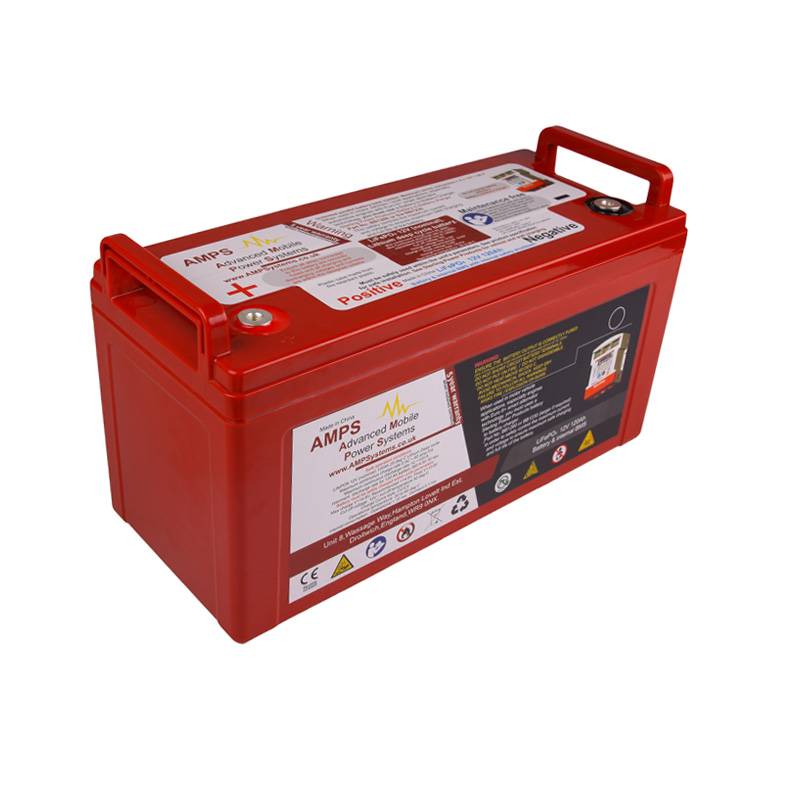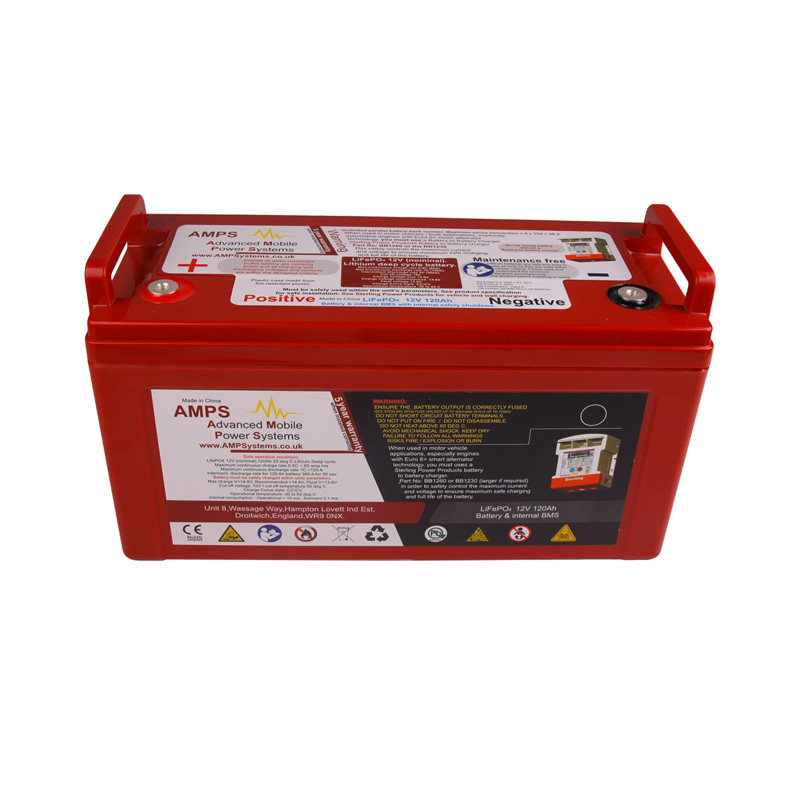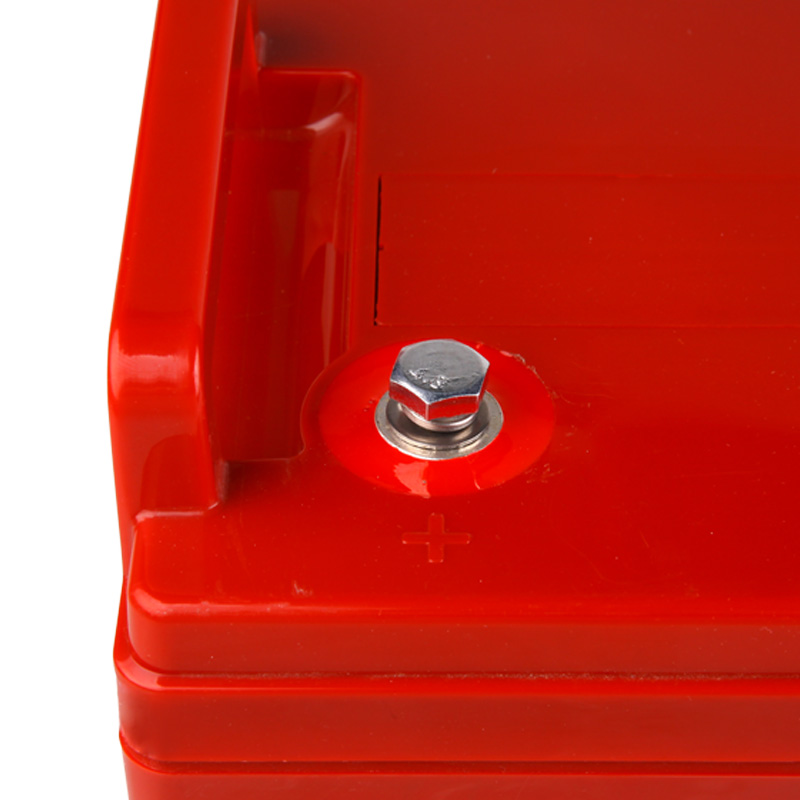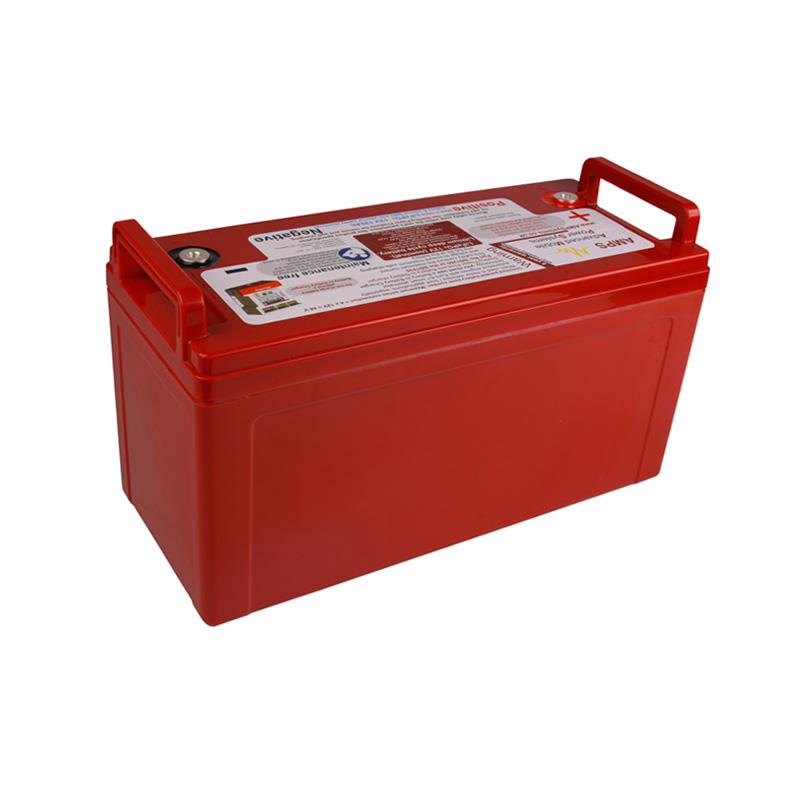1. Inbuilt Military Standard BMS: It has a built-in Multi-functional 120A continuous BMS, 360A for 30 sec peak, with high-quality IC and MosFET for over-current, over-discharge, over-charge, short-circuit, adverse-polarity connection, balancing functions.
2. Wide Applications: It can be used for solar energy storage, marine, RV, etc; and we have received good feedback from customers from US/Canada/UK/Germany, etc.
Main Features: Competitive price and customized solutions according to your voltage, current and case requirements; best quality and high performence for Low Speed Vehicles. Widely used in marine and other commercial vehicles
Other Features
Standard Charge: Charge the battery pack with constant current (CC) at 0.2C5A and when the battery reaches 3.65V per series, charge the battery pack with constant voltage (CV) at 3.65V per series till the charge current declines to 0.05C.
Standard Discharge: Discharge the battery with constant current 0.2 C5A to the cut-off voltage at 20±5℃.
Temperature: 25±2℃
Relative Humidity: 65±20%RH
Atmospheric Pressure: 86kPa~106kPa.
Standard Test Environment
Specification



Customised solutiosn, with optional case

|
No. |
Items |
Specifications |
|
1 |
Nominal Voltage |
12.8V |
|
2 |
Nominal Capacity |
120Ah |
|
3 |
Cell Inside |
LiFePO4 3.2V 120Ah cell |
|
4 |
Configuration |
4S1P |
|
5 |
Standard Charge Current |
0.2C-0.5C |
|
6 |
Max. Charge Current |
1C |
|
7 |
Battery management System (BMS) |
BMS-L4S120120 |
|
8 |
Continuous Discharge Current |
120A |
|
9 |
Peak Discharge Current |
240 |
|
10 |
Full Charged Voltage |
14.6V(3.65V per cell) |
|
11 |
Charge Cut-off Voltage |
15.6V (3.9V per cell) |
|
12 |
Discharge C ut-offVoltage |
8V (2.0V per cell) |
|
13 |
Net Weight |
14.76kg |
|
14 |
Dimensions |
L406*W170*H206(235mm)
|
|
15 |
Connector |
threaded terminals |
|
threaded terminals
|
||
|
16 |
Operating Temperature |
Charging: 0°C ~ 45°C Discharging: -20°C ~ 55°C |
|
17 |
Storage Temperature |
(Recommended to store 20 ± 5°C for long term storage) |
|
18 |
Cycle Life |
2000 times (80% of initial capacity at 0.2C rate, IEC Standard) |
NO
Item
Testing Procedure
Requirements
1
Nominal Capacity
0.5~1hr after standard charge, measure the capacity by discharging at constant current of 0.2C5A to the cut-off voltage of 8V at 20±5℃.
120Ah
2
Capacity at High Discharging Current
0.5~1hr after standard charge, measure the capacity by discharging at constant current of 1C5A.
Discharge time is no less than 51 minutes. no explosion.
3
Low Temperature Discharging
After standard charge, put the battery in a cooling box of -10±2℃ for 16~24hr ,and then discharge the battery with constant current of 0.2C5A and keep record of the discharging time. After 2hr of standby at 20±5℃, check the performance of the battery pack.
Discharge time is no less than 3.5 hours. no explosion.
4
High Temperature Discharging
After standard charge, put the battery in a heating box of 55±2℃ for 2hr, and then discharge the battery with constant current 1C5A and keep record of the discharging time. After 2hr of standby at 20±5℃, check the performance of the battery pack.
Discharge time is not less than 51 minutes. no explosion.
5
Shelf Life
After standard charge, shelve the battery pack for 28 days at 20±5℃,and then discharge it with constant current of 0.2C5A ,recording the discharging time.
Discharge time is not less than 4.25 hours.
6
Cycle Life
Fully discharge the battery before this test ,then charge it with constant current 1C5A,when the voltage of the battery reaches the charge limited voltage , charge the battery with constant voltage until the charging current below 20mA,then have a 0.5h~1h rest period, next ,discharge with current 1C5A to the cut-off voltage .After a 0.5h~1h rest period ,begin next charge and discharge cycle. when two times over discharge time is less than 36min, life of the battery is end.
Cycle life is not less than 1000 cycles. No liquid leakage during the test.
NO
Item
Test Procedure
Requirements
1
Constant Humidity and Temperature
1. After standard charge, keep the battery for 48 hr in an insulated box at constant relative humidity of 90~95% and constant temperature of 40±2℃;
2. Take out the battery pack from the box and standby for 2hr at room temperature and check the battery;
3. Finally discharge the battery with constant current 0f 1C5A to the cut-off voltage and keep record of the discharging time.
No visible distortion, no rust, no smoke, no explosion. Discharging time is not less than 36min.
2
Vibration Test
1. After standard charge, fix the battery to an oscillatory board;
2. Cycle scan in three dimensions of X/Y/Z axis with a frequency from 10Hz to 55Hz for 30min, scan velocity of 1oct/min;
3. Check the appearance and measure the voltage of the battery.
Frequency: 10Hz~30Hz;
Displacement Amplitude/Single Amplitude: 0.38mm,
Frequency: 30Hz~55Hz;
Displacement Amplitude/Single Amplitude: 0.19mm.
No visible damage, no liquid leakage, no smoke, no explosion.
3
Impact Test
After the vibration test, fix the battery to the board in X/Y/Z axis three directions.
Pulse peak acceleration: 100m/s2;
Impact times /sec: 40~80;
Pulse duration: 16ms;
Impact times: 1000±10.
Check the appearance and measure the voltage of the battery.
No visible damage, no liquid leakage, no smoke, no explosion.
NO
Item
Test Procedure
Requirements
1
Thermal-Shock Test
(Heating Test)
1. 24hr standby after standard charge, the battery is put in a heater, with a temperature rising at a rate of 5±2℃/min to 150±2℃;
2. Keep the battery at 150±2℃ for 30 minutes;
3. Check the appearance of the battery.
No explosion, no fire
2
Short Circuit Test
1. 24hr standby after standard charge, the positive and negative terminals of the battery is short-circuited with copper wire(maximum resistance ≤50mΩ);
2. Keep close watch of the change in temperature of the battery. When the temperature of the battery is 10℃ lower than that of the peak value ,end the test ;
3. Check the appearance and the temperature of the battery.
No explosion, no fire. The temperature of the exterior cell casing shall not exceed150℃.
The storage temperature range for the battery is -20 ℃~ 45 ℃. If it is to be stored for a long time (more than three months) ,the battery should be stored at temperature of 23℃±3 ℃ and humidity of 65 %±20%RH in a dry and cool place.
Applications

Pakage: OEM gift box. We can baranding OEM design for you
Come and get one. Email us at market@kokpower.com, call us at 0086-755-2937 1122; or you can send us message below, we will reply you in time.
 X
X